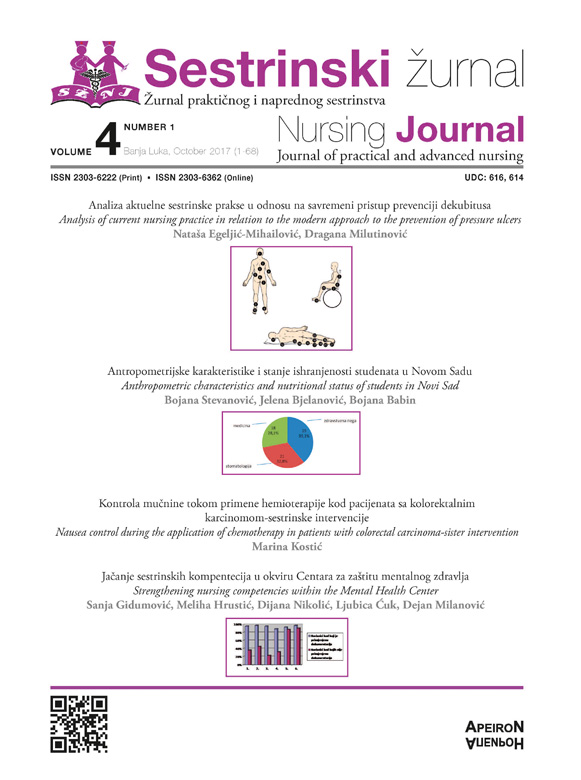The influence of chronic wound leg on the quality of life of patients // Uticaj hronične rane noge na kvalitet života bolesnika
DOI:
https://doi.org/10.7251/SEZ0117013IAbstract
A chronic wound can greatly impair the quality of life of patients. Early we can consider chronic if there is no complete healing after six weeks of treatment. Over time, several different instruments have been developed to monitor the impact of a chronic wound on the quality of life of patients. The original required a lot of time to complete, remained incomplete, and there was a need to develop a standardized, short, multi-dimensional questionnaire. This led to the formation of a “Wound-QoL” questionnaire used in assessing the quality of life of patients with a chronic wound.
In our institution, a pilot study was conducted on the impact of chronic wounds on the quality of life of patients, using a validated questionnaire. The study included 32 patients whose wounds were transplanted to the Institute. The questionnaires were completed at the beginning of the wound treatment at the institution.
In physical terms, a chronic wound has a central impact on our respondents, but its psychological impact is most pronounced. On everyday activities, the influence of the wound is assessed in men as small, and an equal number of women consider it to have a small and big effect. Respondents believe that treating chronic wounds does not carry a large financial burden. It is necessary to assess the quality of life of patients with chronic wound before and after treatment and possible healing of the wound in order to see the impact of chronic wounds on the positive psychological state of the wound and the motivation to heal.

